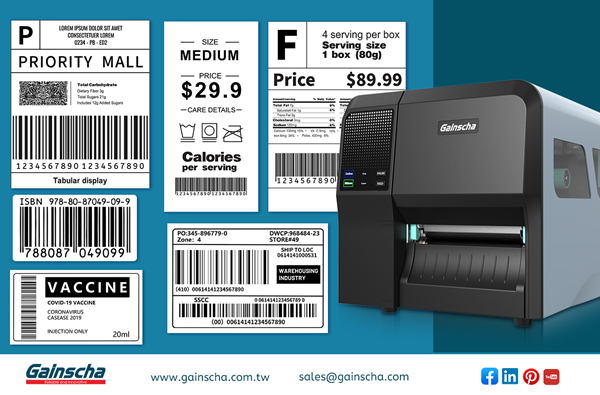Heavy-duty ribbon barcode printers are sophisticated printing devices designed to efficiently produce high-quality barcode labels for various industries and applications. Understanding the inner workings of these printers can provide valuable insights into their operation and benefits. Let's explore how heavy-duty ribbon barcode printers work and the technology behind their functionality.
Thermal Transfer Printing Technology
At the core of heavy-duty ribbon barcode printers is thermal transfer printing technology. Unlike direct thermal printing, which relies on heat-sensitive paper to create images, thermal transfer printing utilizes a thermal transfer ribbon to transfer ink onto labels. This process ensures durable and long-lasting labels suitable for a wide range of applications, including product labeling, asset tracking, and inventory management.
Printhead and Ribbon Interaction
The printhead of a heavy-duty ribbon barcode printer is a critical component responsible for transferring ink from the ribbon onto the label substrate. The printhead contains tiny heating elements that heat up as they come into contact with the ribbon. As the label passes beneath the printhead, the heated elements selectively melt the ink on the ribbon, transferring it onto the label material to create the desired barcode or text.
Ribbon and Label Compatibility
Heavy-duty ribbon barcode printers support various types of thermal transfer ribbons and label materials to accommodate different printing requirements. The choice of ribbon and label depends on factors such as durability, adhesion, and environmental conditions. Ribbons are available in different formulations, including wax, wax-resin, and resin, each tailored to specific applications such as standard printing, chemical resistance, or outdoor durability.
Media Handling and Printing Process
The printing process of a heavy-duty ribbon barcode printer begins with loading the label roll and ribbon into the printer's media handling system. The printer advances the label material and ribbon to the correct position for printing. As the label moves through the printer, the printhead applies heat to the ribbon, transferring ink onto the label to create the barcode or text. Advanced printers may feature sensors and calibration mechanisms to ensure precise alignment and print quality.
Advanced Control and Connectivity
Modern heavy-duty ribbon barcode printers offer advanced control features and connectivity options to streamline printing operations and enhance productivity. These printers may include intuitive touchscreen interfaces for easy configuration and operation, as well as built-in software for label design and printing. Additionally, they support connectivity options such as USB, Ethernet, and wireless, enabling seamless integration with computers, networks, and mobile devices.
Applications and Industries
Heavy-duty ribbon barcode printers find applications across a wide range of industries where accurate and durable barcode labeling is essential. They are commonly used in manufacturing for product identification and traceability, logistics and warehousing for inventory management and shipping, healthcare for patient identification and specimen labeling, and retail for price labeling and asset tracking.
Conclusion
In conclusion, heavy-duty ribbon barcode printers utilize thermal transfer printing technology to produce high-quality barcode labels with durability and precision. Through the interaction of printheads, ribbons, and label materials, these printers create crisp and long-lasting barcodes suitable for various applications and industries. With advanced control features and connectivity options, they offer efficient and reliable printing solutions for businesses seeking to optimize their labeling processes.
For more information on how heavy-duty ribbon barcode printers work and to explore available options, please contact us to connect with a reputable supplier.










